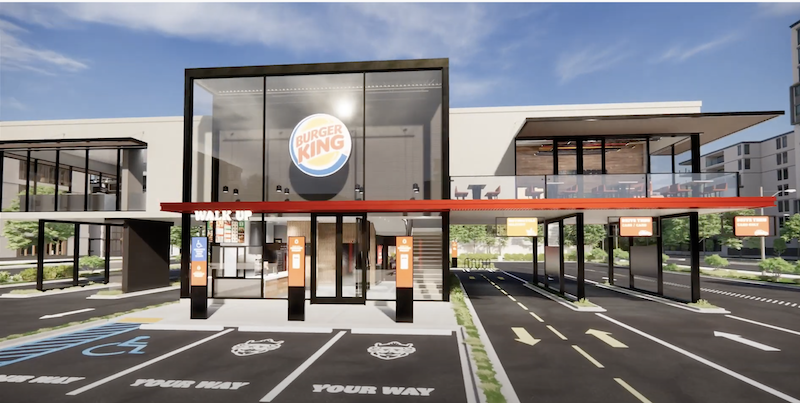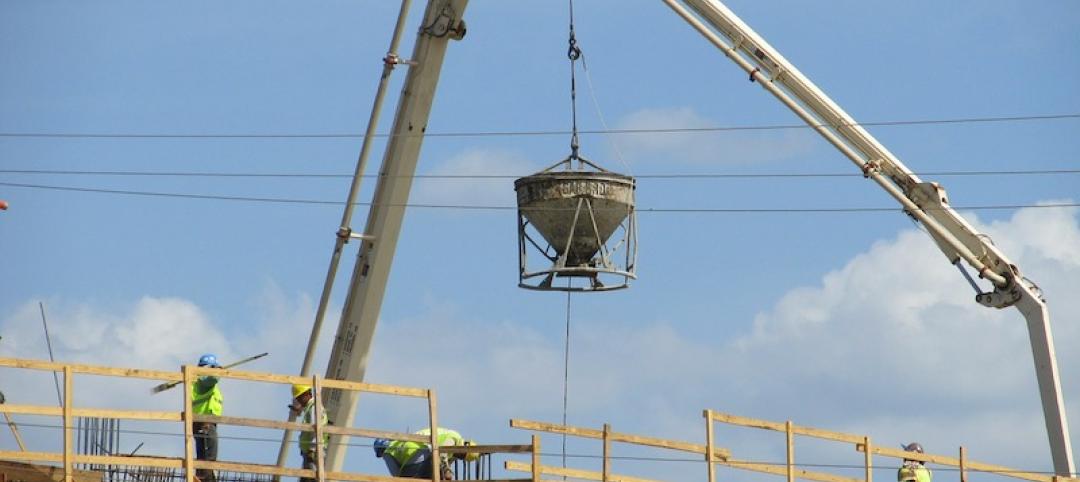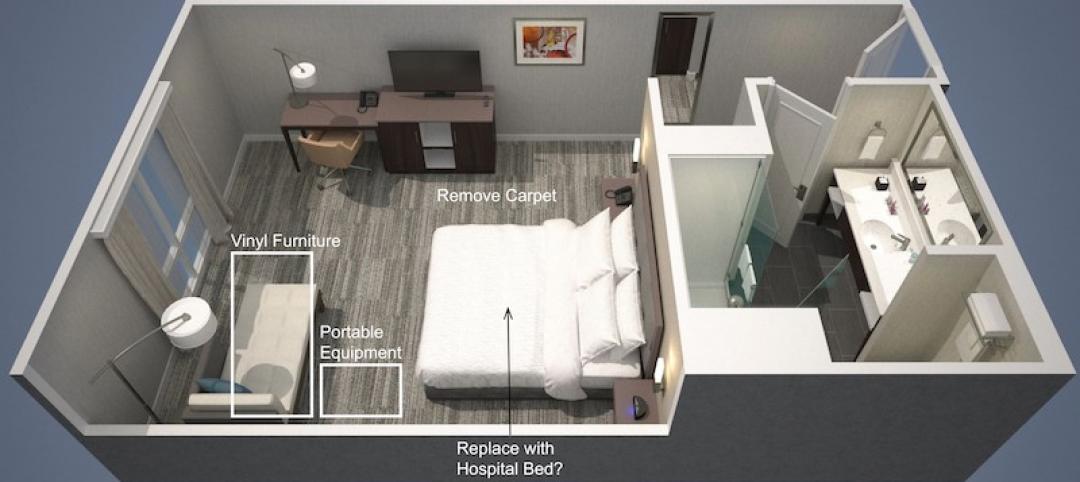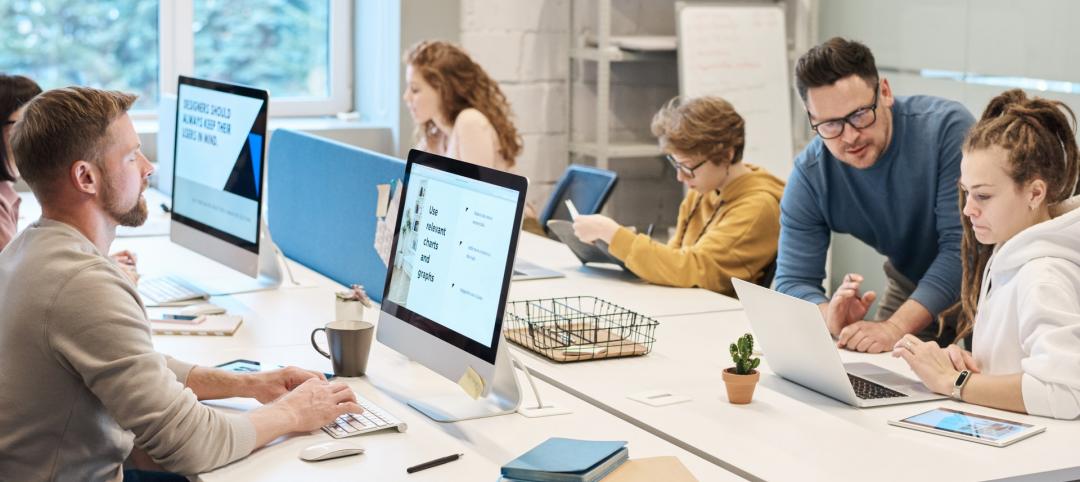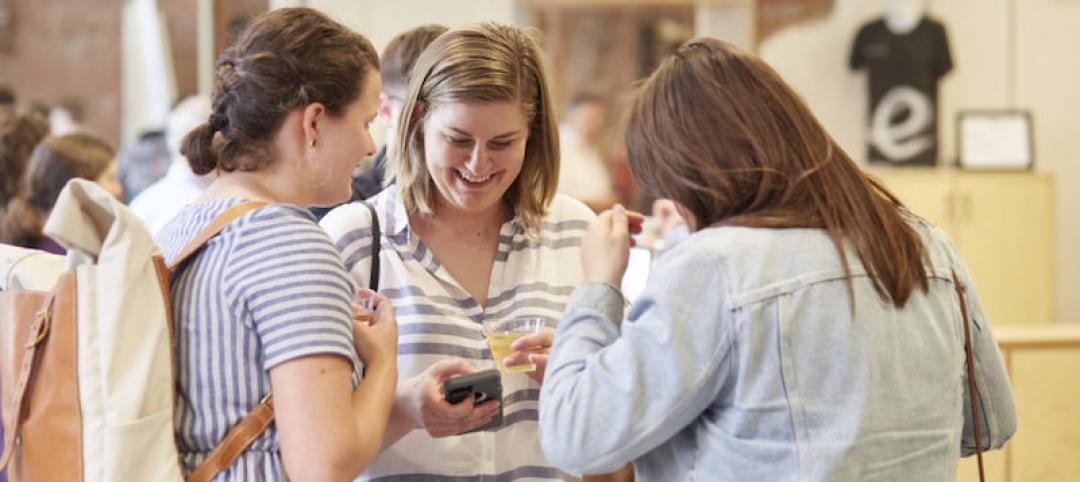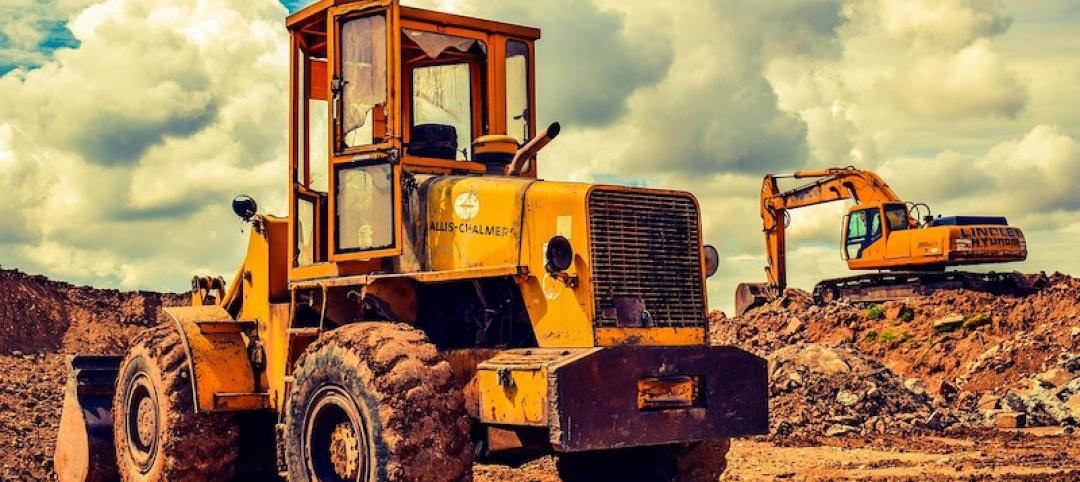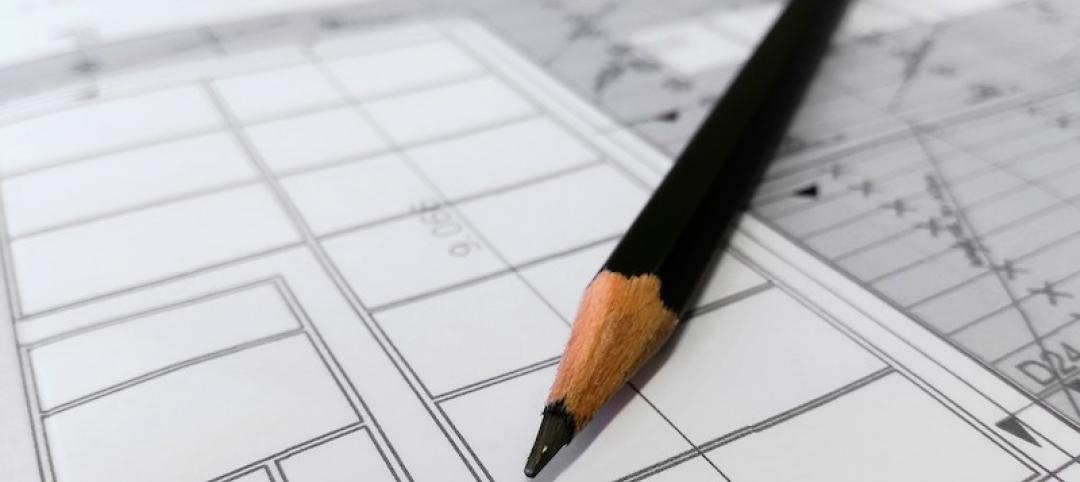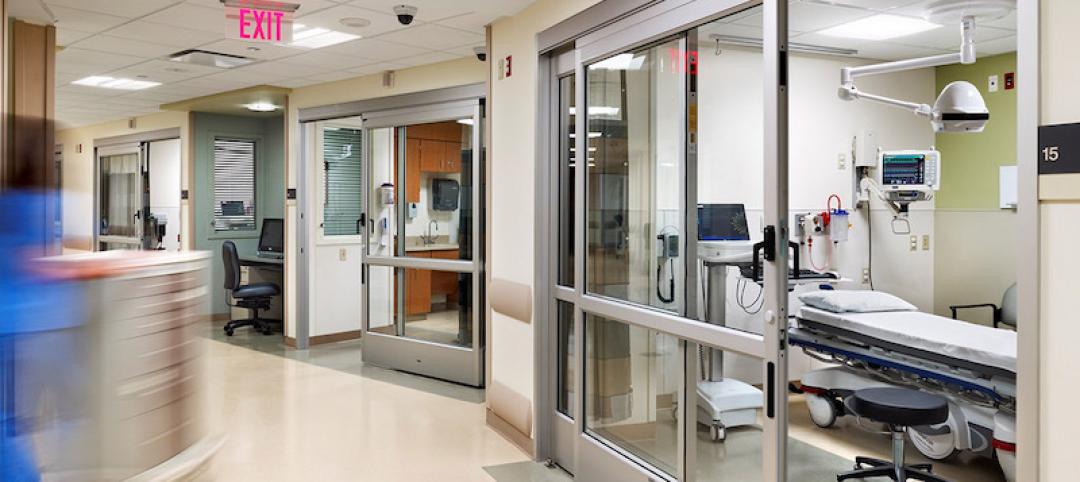Next year, Restaurant Brands International (RBI) will begin to roll out new designs for its Burger King chain that are only two fifths the physical footprint of its traditional fast-food restaurant (which range from 3,000 to 4,000 sf on one-half to 1.5 acres), and are meant to provide customers with different ways food can be ordered and delivered.
The first new designed restaurants will be built in Miami (Restaurant Brands’ headquarters city), Latin America, and the Caribbean islands. Restaurant Brands did not disclose when the new designs would be extended to other cities in the U.S. Burger King has 18,756 locations in more than 100 countries, nearly all of which are independently owned franchises.
Also see: Burger King’s Restaurant of Tomorrow video.
NEW MEANING TO ‘HAVE IT YOUR WAY’
 A mobile pickup area allows guests to use their smartphones to place orders and alert the store's staff when they've arrived.
A mobile pickup area allows guests to use their smartphones to place orders and alert the store's staff when they've arrived.
In a prepared statement released last week, Restaurant Brands said that its new store blueprint would emphasize six elements:
•A double or triple drive-thru with digital menu boards and advertising. An external walk-up window on a glass façade is an alternative ordering point.
•Guests can park their cars in a drive-in area under a solar-paneled canopy, place orders by using the BK App or scanning a QR code, and have their food delivered to the vehicles.
•Customers can use a mobile app to place advance orders, for which the stores have dedicated parking slots for curbside delivery. The app also notifies employees when the customer arrives.
•Mobile and delivery orders can also be picked up from coded food lockers positioned at the store’s exterior. The food will be delivered straight from the kitchen.
•The restaurants will continue to offer on-premises dining. But one design option replaces the indoor dining room with a shaded patio and outdoor seating.
•One design features a kitchen and dining area that’s suspended above the drive-thru lanes, another gesture toward reducing the store’s footprint. Drive-thru guests would have their orders delivered from the kitchen via conveyor belt, with each lane having its own pickup spot. There is also an indoor seating area, designed for an almost 100% touchless experience.
 In one of its new designs, a kitchen and dining area are suspended above drive-thru lanes. Food is delivered via conveyor belt from the kitchen to the pickup window.
In one of its new designs, a kitchen and dining area are suspended above drive-thru lanes. Food is delivered via conveyor belt from the kitchen to the pickup window.
PANDEMIC DRIVES DESIGN CHANGES
Restaurant Brands’ in-house design and technology teams came up with the new concept that “took into consideration how consumer behaviors are changing and [how] our guests will interact with our restaurants,” said Josh Kobza, the company’s COO.
Burger King accounts for about 70% of Restaurant Brands’ outlets. (Its other brands are Popeye’s and Tim Horton’s.) During the three months ended June 30, Burger King’s system-wide revenue, $4.127 billion, was down 25.5%.
Burger King is one of several fast-food chains—including Starbucks, Taco Bell, and Shake Shack—that are responding with new designs to changing guest patterns as a result of the coronavirus pandemic. The research firm NPD Group estimates that visits to drive-thrus jumped by 26% in April, May, and June.
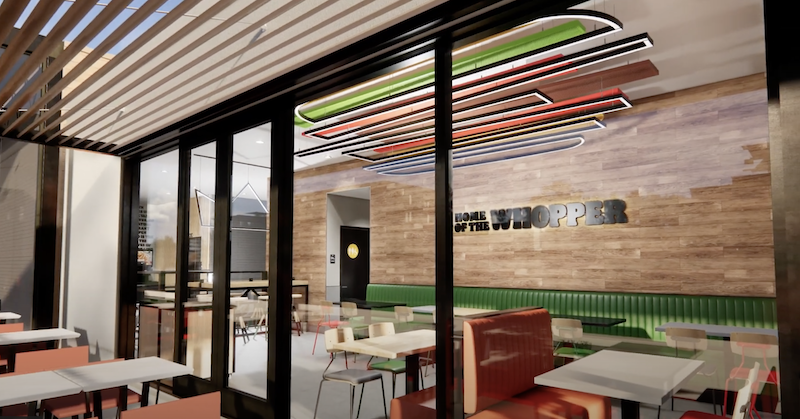 Burger King will still offer on-premises dining, both indoor and now outdoor.
Burger King will still offer on-premises dining, both indoor and now outdoor.
Related Stories
Coronavirus | Apr 1, 2020
February rise in construction outlays contrasts with pandemic-driven collapse in March as owners, government orders shut down projects
Survey finds contractors face shortages of materials and workers, delivery delays and cancellations.
Coronavirus | Apr 1, 2020
Green cleaning and the coronavirus
If your cleaning teams use bleach to disinfect buildings from Coronavirus, will you put your LEED certification at risk?
Coronavirus | Mar 31, 2020
As cities scramble for hospital beds to treat COVID-19 patients, Leo A Daly offers a hotel-to-hospital solution
The firm has devised three conversion models, for different levels of healthcare required.
Coronavirus | Mar 30, 2020
Your turn: Has COVID-19 spelled the death knell for open-plan offices?
COVID-19 has designers worrying if open-plan offices are safe for workers.
Coronavirus | Mar 30, 2020
Learning from covid-19: Campuses are poised to help students be happier
Overcoming isolation isn’t just about the technological face to face, it is about finding meaningful connection and “togetherness”.
Coronavirus | Mar 30, 2020
COVID-19 innovation: Setting parameters for hotel-to-hospital conversions
tvsdesign breaks down different room types and how they might help free up hospital beds for coronavirus patients.
Coronavirus | Mar 30, 2020
New Department of Homeland Security guidance clarifies construction's role in supporting essential critical infrastructure
Construction officials say new federal guidance should signal to state and local officials the need to allow construction activity to continue, or resume, during coronavirus-related work stoppages.
Coronavirus | Mar 27, 2020
Sharp jump in owners cancelling or delaying construction projects across the country, new survey finds
After 42 states added jobs in February, coronavirus is taking a swift and severe toll on the industry, prompting association officials to call for additional measures to help workers and firms recover.
Coronavirus | Mar 27, 2020
Covid-19 stalls demand for design services
Two thirds of architecture firms report slowing or stoppage of projects due to COVID-19.
Coronavirus | Mar 26, 2020
It’s not if, but when: Designing healthcare spaces that support pandemic response
What can we learn from Singapore’s response to COVID-19? How does it impact the next generation of hospitals?


